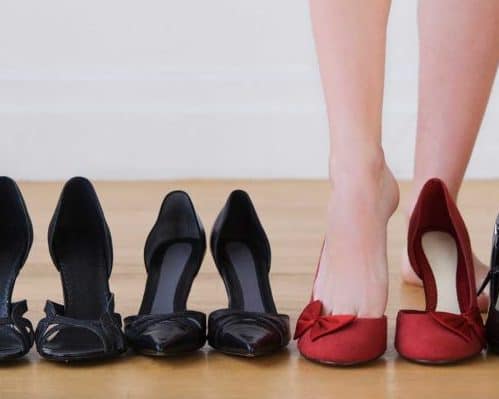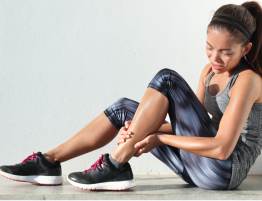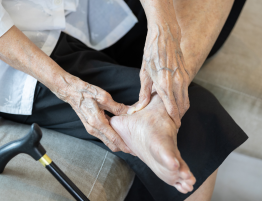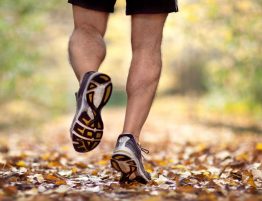
“I am not giving up my high Heels. Period”.
If that’s something that relates to you, then carry on reading.
Designer shoe-companies promote high heels as a way of enhancing the length of women’s legs and improving their figure. On average, 72% of women wear heels at some point in their lives. Studies show that women have approximately four times as many foot problems as men, heels being one of the biggest factors contributing to this startling statistic.
Your feet are the base of your body’s movement and posture, and the type of shoes you wear can affect your entire alignment. Wearing heels shifts your weight toward the balls of the feet, so your knees and hips go forward and your back must hyperextend backward for you to maintain balance.
Problems that can be aggravated with wearing high heels constantly include:
- Hallux Valgus (bunion):
The bunion is a medial prominence of bone at the base of your big toe joint. It is caused by inward movement of the 1st Metatarsal (forefoot bone) and outward shift of the actual toe. Although the high heels cannot be blamed as the only cause for developing a bunion, it certainly can be one of the main reasons of aggravating it. The common pointed end of the fancy stilettos squish the toes together and gradually increase the big toe deviation. It also increases the rubbing against the bunion and can cause this area to inflame.
- Metatarsalgia (forefoot pain):
The high heels push your weight forward. More weight is pushed to the ball of the foot. Hard skin start to develop in this area as a sign of overloading. The overloaded joints can inflame and irritate the nerves in-between the forefoot bones causing a “Neuroma”. This cause burning pain that shoots down the toes.
- Lesser toe deformities:
The constant position of elevation of the lesser toes in high heeled shoes causes the intrinsic muscles of the foot to become weak. These are the muscles that bend the toe at the top joint and straighten the toes at the middle joints. The result is a disadvantage of these muscles and the longer muscles coming to the toes from your leg taking over. These muscles do the exact opposite. They extend the toes at the top joint and bend the toes at the middle joints. That’s the position of clawing. The more you spend in high heels the more this position become fixed.
- Tight Calf Muscles:
In high heels the heel moves upward causing your calf muscles to shorten. If the heels are worn for extended periods gradually the calf muscles tighten. In turn this increases the overloading of your forefoot, midfoot and ankle joint.
- Achilles Tendonopathy (pain and inflammation of the Achilles tendon):
The tight calf muscles build significantly more tension in the Achilles tendon which can predispose the tendon to inflammation. The inflamed tendon deposit haphazard fibers that are weaker and cause the tendon to swell and become painful.
- Ankle Instability:
The position of the foot pointing downward is an unstable position of the ankle joint. As such your muscles work harder to stabilise your ankle. These muscles can inflame causing pain. If they get tired it becomes easier for you to go over your ankle.
- Posterior Impingement:
The foot pointing downward position pushes the heel bone towards the back of the leg bone. An excess bone in this area is sometimes a normal variant in some people. This position can cause this bone to be trapped causing pain in certain positions or during certain movements.
“Ok. I still love my heels and I want to wear them !!”
Fair enough, you have possibly invested a small fortune on those heels. So, if you must wear heels, here are some simple advice that might help you:
- Alternate:
Change the height of the heel you wear from day to day. Wearing heels of the same height every day consistently contracts the Achilles tendon. By regularly switching between heels and flats, you allow the tendon to stretch.
- Limit the time in heels:
Cap the time you’re walking in heels to three hours at a time. This can be done by wearing flat shoes until your important meeting or when you are driving.
- Lower your heels:
Wear lower heels or wedges if possible. This means less load on the ball of the foot and less tightness developing in your calf muscles.
- Wider toe box:
A narrower shoe can become far more unfordable after a shorter period because of excessive side-to-side pressure on the nerves of the forefeet.
- More stable heels:
Choose a slightly thicker heel as this will spread the load more evenly providing some stability and reducing the chance of falls.
- Stretch:
Putting some regular calf muscle stretching in your routine is a great idea. It will allow you to wear flat shoes like trainers for exercising. If the calf muscles are very tight some females struggle to go in the flat shoes. Both active and passive, static and dynamic stretching is useful.
- Not for the long walks:
Avoid the heels when you expect a lot of walking or a lot of standing in ques. If you are travelling for example it is a bad idea to have those when you could be running between terminals to catch your connection flight.
- Not when you have a problem:
If you have any active foot problem, like forefoot pain, a corn at the ball of the foot, pain in your Achilles, a recent inversion injury to your ankle, it is best to avoid aggravating things by wearing heels.
If you are buying new shoes, these are some tips to allow you to pick a better fitting and more comfortable shoe:
- Try new shoes on at the end of the day. Feet normally swell and are at their largest size at that point of the day. This will allow you to avoid shoes that are on the tight side.
- Have your feet measured if possible. As you get older, the size and width of your feet can change.
- Always try the new shoes while standing and walking. This will give a much better idea on how well the shoes are fitting. Also, minor inconveniences like rubbing at the back of the heel can be discovered.
- Press on the end of the shoe and move your toes to make sure you have enough space for your toes. You need a half-inch of space between your longest toe and the end of the shoe.
- Wear the same type of socks you intend on wearing regularly to try on shoes.
- Your normal size might not be the most comfortable for you with all different models and makes of shoes. So always relay on trying the shoe to be sure it is comfortable.
Hisham Shalaby





